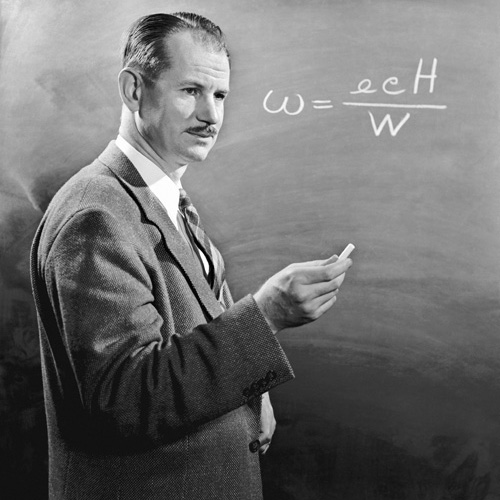Neptunium
93
Np
Ryhmä
Ei saatavilla
Jakso
7
Lohko
f
Protonia
Elektronit
Neutronia
93
93
144
Yleiset ominaisuudet
Järjestysluku
93
Atomipaino
[237]
Massaluku
237
Luokka
Aktinoidit
Väri
Hopea
Radioaktiivisuus
Kyllä
Named after the planet Neptune
Kiderakenne
Yksinkertainen rombinen
Historia
Neptunium was the first synthetic transuranium element of the actinide series to be discovered.
Neptunium was first produced by Edwin McMillan and Philip H. Abelson in 1940 at Berkeley Radiation Laboratory of the University of California.
The team produced the neptunium isotope 239Np by bombarding uranium with slow moving neutrons.
Neptunium was first produced by Edwin McMillan and Philip H. Abelson in 1940 at Berkeley Radiation Laboratory of the University of California.
The team produced the neptunium isotope 239Np by bombarding uranium with slow moving neutrons.
Elektroneja elektronikuorilla
2, 8, 18, 32, 22, 9, 2
Orbitaalirakenne
[Rn] 5f4 6d1 7s2
Neptunium is obtained as a by-product from nuclear reactors
Fyysiset ominaisuudet
Olomuoto
Kiinteä
Tiheys
20,45 g/cm3
Sulamispiste
910,15 K | 637 °C | 1178,6 °F
Kiehumispiste
4273,15 K | 4000 °C | 7232 °F
Sulamislämpö
10 kJ/mol
Höyrystymislämpö
335 kJ/mol
Ominaislämpökapasiteetti
- J/g·K
Esiintyvyys maankuoressa
Ei saatavilla
Esiintyvyys maailmankaikkeudessa
Ei saatavilla

CAS-numero
7439-99-8
PubChem CID-numero
Ei saatavilla
Atomiominaisuudet
Atomisäde
155 pm
Kovalenttisäde
190 pm
Elektronegatiivisuus
1,36 (Paulingin asteikko)
Ionisoitumispotentiaali
6,2657 eV
Moolitilavuus
11,62 cm3/mol
Lämmönjohtavuus
0,063 W/cm·K
Hapetusluvut
3, 4, 5, 6, 7
Käyttö
Neptunium is used mainly for research purposes.
When bombarded with neutrons 237Np is used to produce 238Pu which is used for spacecraft generators and terrestrial navigation beacons.
237Np is used in devices for detecting high-energy neutrons.
When bombarded with neutrons 237Np is used to produce 238Pu which is used for spacecraft generators and terrestrial navigation beacons.
237Np is used in devices for detecting high-energy neutrons.
Neptunium is harmful due to its radioactivity
Isotooppi
Vakaat isotoopit
-Epävakaat isotoopit
225Np, 226Np, 227Np, 228Np, 229Np, 230Np, 231Np, 232Np, 233Np, 234Np, 235Np, 236Np, 237Np, 238Np, 239Np, 240Np, 241Np, 242Np, 243Np, 244Np